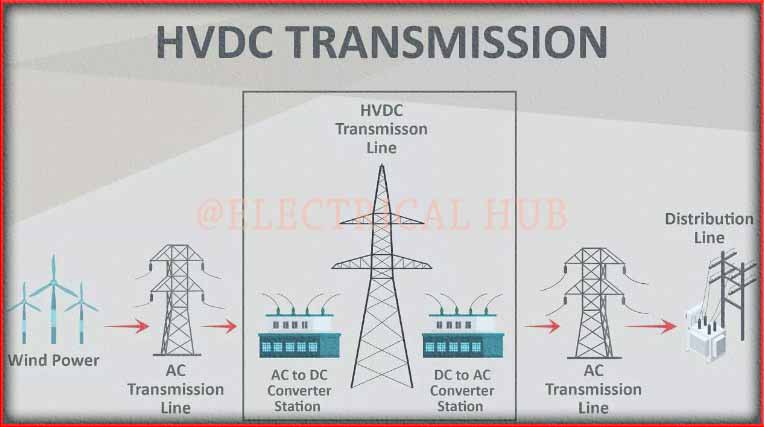7 Important HVDC Operating Modes
HVDC Operating Modes
The effectiveness and adaptability of High-Voltage Direct Current or HVDC transmission systems in the long-distance transmission of electrical power are well known. Each system performs a critical role in ensuring effective power transfer and grid stability while operating in different HVDC operating modes. We’ll go into great detail about the various HVDC operating modes in this article.

Read More About
Rectification Mode
The rectification mode is the most prominent in HVDC operating modes. The incoming alternating current (AC) power from the electrical grid goes through an important transformation in this mode at the sending end converter station. Direct current (DC) power is generated from it, which is necessary for effective long-distance power transmission. HVDC systems increase energy efficiency by minimizing power losses during electricity transfer by converting AC to DC.
Inversion Mode
Moving on, we come across the inversion mode, which is an essential mode in HVDC Operating Modes, at the receiving end converter station. Here, the transmission line’s DC electricity that was received is transformed back into AC power. This exact DC-to-AC conversion makes sure that the electricity synchronizes perfectly with the features of the nearby AC grid. For end users to receive electricity effectively and consistently, inversion mode is crucial.
Bidirectional Power Flow
The ability of HVDC Operating Modes to flow power in both directions is one of their fundamental characteristics. HVDC systems enable flexible energy transmission because they can carry electricity in both directions. Grid operators can respond to shifting energy demands thanks to this flexibility, diverting excess electricity to locations where it is most required. The electrical grid’s adaptability and resilience are improved by the bidirectional feature.
Steady-State Operation
Stable-state operation is a reliable standard in the world of HVDC operating modes. HVDC systems deliver a steady and uninterrupted supply of electricity in this mode. For the reliable distribution of energy across great distances, this mode is crucial. It serves as the foundation for the dependability of HVDC transmission.
Transient Operation
A crucial component of HVDC Operating Modes is transients. During system startup, shutdown, or fault recovery, these transitory phases take place. HVDC control systems are crucial in regulating power flow and grid conditions during these times of rapid change, maintaining stability and safety. For the electrical grid to run smoothly and effectively during transient operations, it must be able to quickly adjust.
Voltage and Frequency Control
A crucial component of grid synchronization, voltage, and frequency management is also included in the HVDC Operating Modes. HVDC converters are essential for voltage regulation and for guaranteeing that the generated AC voltage accurately matches the frequency and phase of the grid. For the electrical grid to function well and avoid disturbances, this synchronization is essential.
Grid Stabilization
Another essential component of HVDC Operating Modes is grid stabilization. HVDC technology successfully controls power flow, voltage levels, and grid frequency, which considerably improves grid stability. These skills play a crucial role in preventing grid disruptions and blackouts, thereby improving grid reliability as a whole.
In conclusion, it is important to have a thorough understanding of HVDC Operating Modes to optimize power transmission, foster grid stability, and guarantee effective and dependable electricity delivery. These modes—rectification, inversion, or bidirectional power flow—help modern electrical grids be flexible and efficient, which ultimately benefits customers and the energy sector as a whole.
Subscribe to our Newsletter “Electrical Insights Daily” to get the latest updates in Electrical Engineering. You can also Follow us on LinkedIn and Facebook to see our latest posts on Electrical Engineering Topics.
Worth Read Posts
